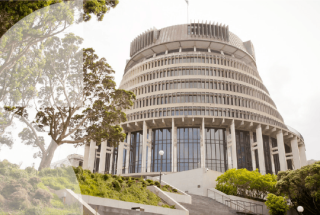Court of Appeal Decision in R J Davidson Family Trust

Court of Appeal Decision in R J Davidson Family Trust
Thursday 27 September, 2018
This was the much-anticipated Court of Appeal decision on an appeal from the High Court on the question of whether a consent authority can, or should, have recourse to Part 2 of the Resource Management Act 1991 (“RMA”), when considering resource consent applications under section 104 of the RMA. This was framed in the following questions of law:
- Did the High Court err in holding that the Environment Court was not able or required to consider Part 2 of the Resource Management Act 1991 directly and was bound by its expression in the relevant planning documents?
- If the first question is answered in the affirmative, should the High Court have remitted the case back to the Environment Court for reconsideration?
The relevant decisions of the Environment Court and High Court in RJ Davidson on this issue was the topic of a previous law brief article. As such, the following addresses the Court of Appeal’s consideration of the question and only briefly touches on the background to its decision.
Summary
In summary, the legal position following the Court of Appeal's decision is that it is now permissible to have recourse to Part 2 in resource consent applications, however doing so is unlikely to advance matters where it is clear that the plan is "competently prepared" with a "coherent set of policies" such that there is no need to refer to Part 2.
Background
The Environment Court in RJ Davidson[1] declined an application for resource consent to establish and operate a mussel farm adjacent to and surrounding the southern end of an unnamed promontory jutting out into the northern end of Beatrix Bay in Pelorus Sounds. The Court addressed the phrase “subject to Part 2” in section 104(1) which precedes the list of matters which a decision maker must have regard to when assessing an application for resource consent. It considered that the approach in the decision King Salmon[2], although it was a plan change matter, did have application to resource consents. The effect of that was that in the absence of invalidity, incomplete coverage or uncertainty of meaning in the relevant statutory documents (e.g., district plan, regional policy statement), there is no need to look at Part 2:
“[…] absent invalidity incomplete coverage or uncertainty of meaning in that plan or in any later statutory documents which have not been given effect to, there should be usually no need to look at most of Part 2 of the RMA.[3]
Relevantly, the applications at issue in the decision in King Salmon, and indeed RJ Davidson, were subject to the provisions of the New Zealand Coastal Policy Statement (“NZCPS”), the development of which is subject to a specific process in the RMA. In that regard, the Environment Court made the following finding with respect to the application of the King Salmon approach to Part 2:
[260] We accept that in this proceeding we are not obliged to give effect to the NZCPS, merely to “have regard to” it, and even that regard is “subject to Part 2” of the RMA. However, logically the KingSalmon approach should apply when applying for resource consent under a district plan: We note that the majority of the Supreme Court in King Salmon was clearly of the view that its reasoning would apply to applications for resource consents.[4]
The Environment Court decision to decline the applications was appealed to the High Court on the question of whether the Environment Court erred in failing to apply Part 2 of the RMA in considering the application for resource consent under section 104.
The High Court upheld the Environment Court decision and the Court of Appeal describes the approach of the High Court Judge in regard to the King Salmon decision as follows:
- The High Court Judge considered that the Supreme Court had rejected the “overall judgement” approach in relation to the implementation of the NZCPS in particular;
- Such an approach (“overall judgment”) would be “inconsistent with the elaborate process required before a national coastal policy statement can be issued”;
- The reasoning in King Salmon applied to s 104(1), because the relevant provisions of the planning documents, including the NSCPS, had already given substance to the principles in Part 2 of the Act.
Appeal to the Court of Appeal
The Court of Appeal traced the history of s 104 and the positioning of the words “subject to Part 2” within section 104(1)(b). It found that the position of the words “subject to Part 2” near the outset and preceding the matters which a decision maker must have regard to “clearly show that a consent authority must have regard to the provisions of Part 2 when it is appropriate to do so”.
The Court noted that, unlike planning documents which are subject to the processes under Part 4, applications for resource consent for a proposal may not reflect the outcomes envisaged by Part 2. It states at paragraph [51] that “planning documents may not furnish a clear answer as to whether consent should be granted or declined” and that while section 104 requires that resource consents be considered having regard to the relevant planning documents “it plainly contemplates reference to Part 2”.[5]
Having reached that conclusion, the Court went on to consider whether the ability to consider Part 2 in the context of resource consents is subject to any limitations of the kind contemplated in King Salmon, which concerned the relationship between the NZCPS and the relevant proposed plan change. In doing so, the Court analysed the decision in King Salmon, its key findings being:
- That the Supreme Court considered the NZPCS would not be given effect to if the plan were changed as proposed, because of the Board of Inquiry’s finding that implementing the change would result in significant adverse effects on areas with outstanding natural character and landscape;
- That the “overall judgment” approach was rejected because of the prescriptive nature of the relevant provisions and Policies 13 and 15 of the NZPCS and the statutory obligation to give effect to them.[6]
- That the Court referred to “additional factors” that supported rejection of the “overall judgment” approach “in relation to the implementation of the NZCPS.” This included the general points that it would be inconsistent with the elaborate process required before an NZPS can be issued, and secondly the uncertainty that would be created by adoption of the “overall judgment” approach.[7]
Critically, the Court of Appeal went on to state at paragraph [66]:
[66] We see these various passages in the judgment as part of the Court’s rejection of the “overall judgment” approach in the context of plan provisions implementing the NZCPS. Given the particular factual and statutory context addressed by the Supreme Court, we do not consider it can properly be said the Court intended to prohibit consideration of Part 2 by consent authority in the context of resource consent applications. …
[Emphasis added.]
Its reasons for supporting that conclusion are stated in the following terms (summarised):
[67] First the Court made no reference to s 104 of the Act nor to the words “subject to Part 2”. If it was intended to be a general application across the board, affecting not only plan provisions under pt 4 of the Act, but also resource consents under pt 6, we think it inevitable that the Court would have said so.[8]
[68] Secondly, we do not consider that what the Supreme Court said at [137]-[138] indicates it intended its reasoning to be generally applicable, including to resource consents, as the Environment Court considered was the case.[9]
[70] Thirdly, resource consents fall to be addressed under s 104(1) and, as we have demonstrated, the statutory language plainly contemplates direct consideration of pt 2 matters. The Act’s general provisions dealing with resource consents do not respond to the same or similar reasoning to that which led the Supreme Court to reject the “overall judgment” approach in King Salmon.[10]
APPLICATION TO ASSESSMENTS UNDER SECTION 104
The Court of Appeal appears to make a distinction between circumstances where the NZPCS is engaged and other applications. Relevantly, it contemplated a circumstance where a proposal may be affected by “different policies” so that it was unclear from the NZCPS as to whether consent should be granted or refused. The Court stated that in such circumstances, the consent authority would be in the position where it had to exercise a judgment.[11] It follows that recourse to Part 2 would be necessary.
The Court considered that a similar approach “should be taken in cases involving applications for resource consent falling for consideration under other kinds of regional plans and district plans” and that in all such cases the relevant plan provisions should be considered and brought to bear on the application in accordance with s 104(1)(b).[12] It stated that what is required is “a fair appraisal of the objectives and policies read as a whole” (quoting from Dye v Auckland Regional Council [2002] at [25]).[13]
Implications for planning assessments
The challenge will be in determining whether, when assessing a particular application, the relevant plan has “been prepared having regard to Part 2 and with a coherent set of policies designed to achieve clear environmental outcomes”. This is because the Court considered that if such policies have been had regard to in accordance with section 104(1), reference to Part 2 “would likely not add anything”. On the other hand, the Court considered that if "it appears the plan has not been prepared in a manner that appropriately reflects the provisions of Part 2, that will be a case where the consent authority will be required to give emphasis to Part 2". [14]
The Court frames the question in the following terms:
[75] If a plan has been competently prepared under the Act it may be that in many cases the consent authority will feel assured in taking the view that there is no need to refer to Part 2 because doing so would not add anything to the evaluative exercise. Absent such assurance, or if in doubt, it will be appropriate and necessary to do so. That is the implication of the words “subject to Part 2” in s 104(1), the statement of the Act’s purpose in s 5, and the mandatory, albeit general, language of ss 6, 7 and 8.
This would suggest that if a consent authority has doubt as to whether the relevant plan has been competently prepared under the RMA, it will be appropriate and necessary to have recourse to Part 2. This is a different approach to that previously expressed by the Supreme Court in King Salmon whereby recourse to Part 2 is appropriate where there is any “invalidity, incomplete coverage or uncertainty” (albeit in the context of interpreting the NZCPS). Interestingly, the Court of Appeal considered that “more flexibility” than this may be required for plans which are prepared without having to comply with ministerial directions.[15]
While the Court essentially described its approach as being more flexible and clearly states that it did not consider King Salmon to prevent recourse to Part 2[16], there remains uncertainty as to when it might be “appropriate” to do so. The issue is interpreting what is meant by a plan not having been “competently prepared”. We expect that this will be the subject of future decisions in the Environment Court where the application of Part 2 is determinative in a particular resource consent application.
In our view, on the basis that the Court of Appeal contemplates a more flexible approach to when recourse may be had to Part 2 than in King Salmon and RJ Davidson; and its finding that recourse to Part 2 is not precluded in determining resource consent applications, it will be appropriate for a processing planner to consider Part 2 in any assessment under section 104(1). This will be particularly relevant if there are any doubts in relation to the provisions of the relevant planning documents and where the application of Part 2 is determinative.





